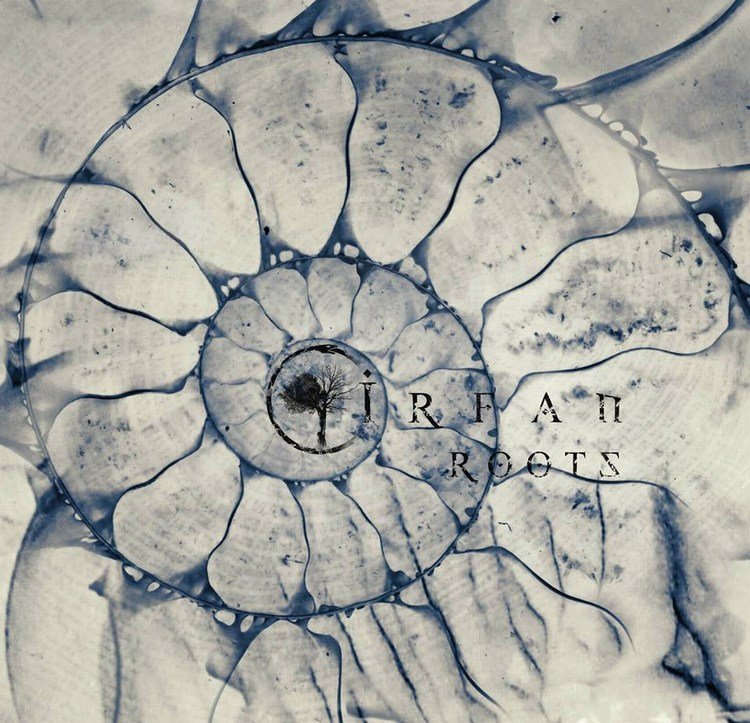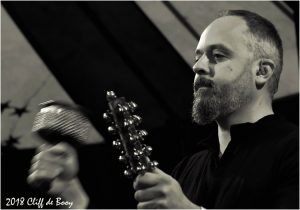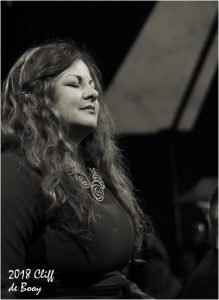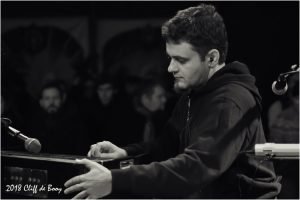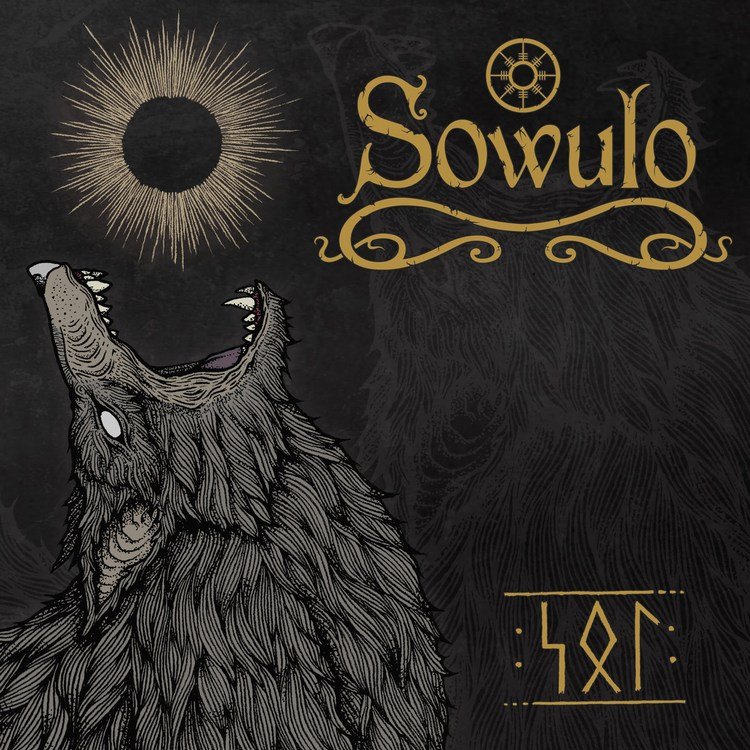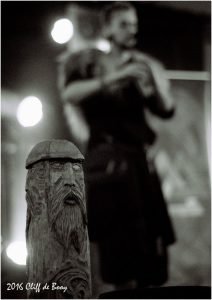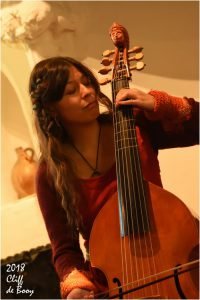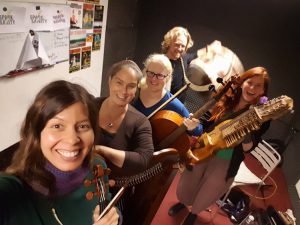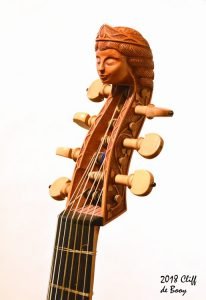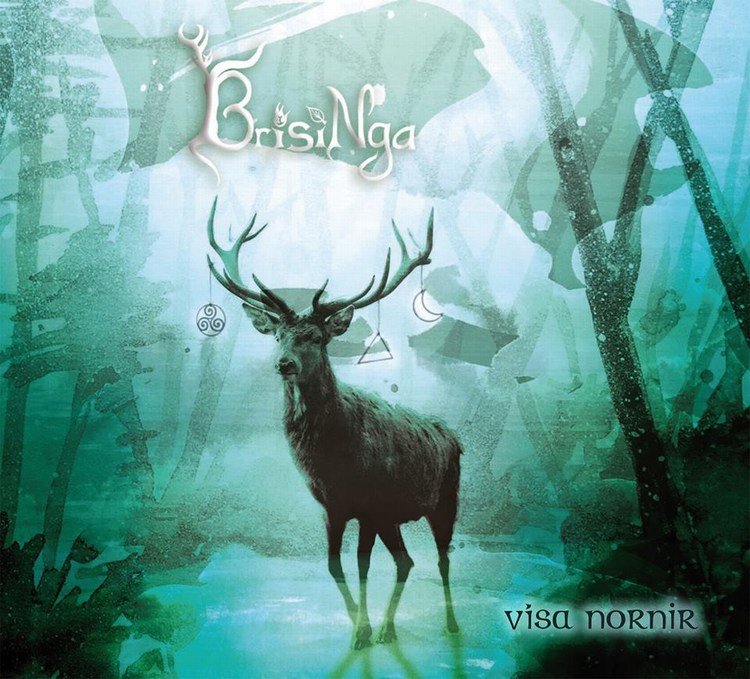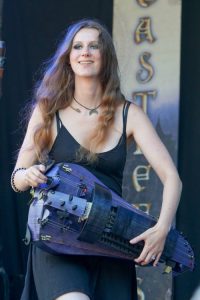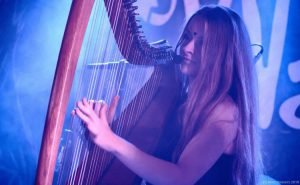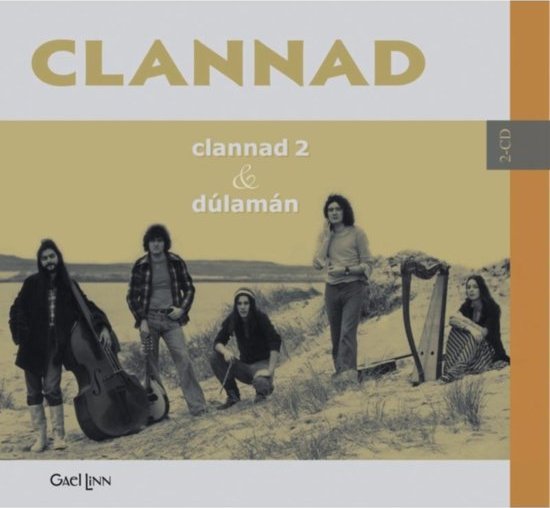
The year is 1973, Woodstock, the festival that gave a voice and its name to a whole generation, is already 4 years gone. Three of its most famous children, Jim Morrison, Janis Joplin and Jimi Hendrix already passed away, the darker side of a free lifestyle. The biggest story in the news is that a peace treaty finally ends the Vietnam war, giving the 60’s peace protesters their big victory. In the wake of the 60’s protests, a local protest against underground atom bomb trails in Amchitka, Alaska is turning into a nature protection group called Greenpeace. In the Middle East the conflict between Egypt, Syria and Israel escalates into the Yom Kippur war. The Egyptian-Syrian coalition is supported by some North African countries, Israel by the West. As a result the main oil-producing countries call out an oil embargo against the US, The Netherlands, Canada, the UK and Japan. Which means oil shortages. In Holland cars are not allowed to drive on Sundays. Can you imagine? 1973, just another year in a crazy world that is changing fast.In the folk world things are also changing. In America the revival of folk music, that started as acoustic protest songs from artists like Woody Gutrie, Simon and Garfunkel, or Joan Baez and her protégé Bob Dylan, is starting to grow into folk rock, with The Grateful Dead, Buffalo Springfield and of course Neil Young being a few of the great names in that scene. In England bands like Fairport convention, Planxty and Steeleye Span are doing the same thing and are laying the foundations for what will become the Celtic rock. In France Alan Stivell is modernising and popularising traditional folk music from Brittany, an influence that can still be felt to this day. (Think of Manau’s big 90’s hit La Tribu de dana of the 90’s or more recently the lovely pop folk CD Bretagne by famous French singer Nolwenn Leroy
 Right amongst all these changes, two things happen that will be significant for the future. One a bit more significant than the other. First of all a little babyboy called Alexander Sealgaire is born May 1973. A small footnote for mankind, a huge step for CeltCast, because he is one of the two founding fathers of this station. Secondly a young Irish band releases their first album, challenging the general opinion that music should be in English, rather than a local language, and that folk music should be traditional. That band of course is
Clannad,
and their music will, in the 80’s, spark a whole new genre, Celtic new age music. A legacy that still lives on to this day.
– One small thing I want to add before I write on. Although Clannad is an Irish band, quite often their names have been translated into English for ease of reading and pronunciation. I considered doing that too. But I decided against it. In the early years Clannad clearly made the choice to sing in Irish, even against the wishes of a record label. That is what set them apart from other bands at the time. So I wanted to honour that spirit. A second reason is that on all the albums I’ve listened to the names of the band members are written in Irish. So again, although I know it’s a bit harder to read, I found I should honour the choices the band made at the time and use the Irish names.-
HOW IT ALL BEGAN
Right amongst all these changes, two things happen that will be significant for the future. One a bit more significant than the other. First of all a little babyboy called Alexander Sealgaire is born May 1973. A small footnote for mankind, a huge step for CeltCast, because he is one of the two founding fathers of this station. Secondly a young Irish band releases their first album, challenging the general opinion that music should be in English, rather than a local language, and that folk music should be traditional. That band of course is
Clannad,
and their music will, in the 80’s, spark a whole new genre, Celtic new age music. A legacy that still lives on to this day.
– One small thing I want to add before I write on. Although Clannad is an Irish band, quite often their names have been translated into English for ease of reading and pronunciation. I considered doing that too. But I decided against it. In the early years Clannad clearly made the choice to sing in Irish, even against the wishes of a record label. That is what set them apart from other bands at the time. So I wanted to honour that spirit. A second reason is that on all the albums I’ve listened to the names of the band members are written in Irish. So again, although I know it’s a bit harder to read, I found I should honour the choices the band made at the time and use the Irish names.-
HOW IT ALL BEGAN
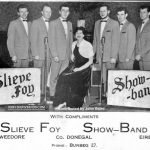 So how did it all start? In 1970 three siblings – Máire Ni Bhraonáin, (Moya Brennan – vocals, harp), Ciarán Ó Braonáin (Ciarán Brennan – double bass, guitar, mandolin, piano, bodhrán, glockenspiel, vocals) and Pól Ó Braonáin ( Pol Brennan – Flute, whistle, bongos, guitar vocals) together with their twin uncles Noel Ó Dúgáin (Noel Duggan – guitar, vocals) and Pádraig Ó Dúgáin (Padraig Duggan – mandolin, mandola, guitar, vocals) started playing music together. Music ran through the family, as father Leo Ó Braonáin was a member of the Slieve Foy band, – an Irish show band -, and mother Máire Ni Bhroanáin (born Ni Dúgáin) was a music teacher.
It will come as no surprise that all the kids were brought up with music, encouraged by their parents to play instruments and sing. Máire as well as her younger sister Eithne, better known as
Enya
– were both classically trained singers.
In 1968 father Leo bought a local pub in the village of Meenaleck in the county of Donegal in Ireland. As Leo saw, during the tours with the Slieve Foy band, how the dance halls around the country were closing at the time, he decided his tavern should be a podium for bands. A business plan that would never work according to the local businessmen, bankers, solicitors and others who thought they knew better.
Leos Tavern
wouldn’t last more than 6 months!. Well it still exists and is run by the second generation of Ó Braonáin!
It was in that tavern that the family band came together. As Clann as Dobhair (family from Dore, a name that was shortened to Clannad in 1973.) they played their first gigs, mostly covering songs like those of
the Beatles,
Joni Mitchell and
the Beach Boys.
When they entered a local music competition in 1970, the Letterkenny Folk Festival, they played a selection of traditional Gaelic songs, arranged by them for a full band.
They won the contest and got their prize, a record deal with Philips. And so it was that in 1973 the first Clannad album, simply called Clannad was released by Philips Ireland. An LP filled with 8 traditionals re-arranged by the band, 4 covers and Lisa the only song on the album that the band wrote themselves.
Clannad wasn’t an instant success. The label had doubts that a band singing in Irish would sell, so they didn’t renew the contract. Even in Ireland itself there were sceptics who laughed at the idea that a Gaelic speaking band would be succesful. But, as their father/uncle Leo before them, Clannad believed in what they did and stuck to their guns, so the next two albums, Clannad 2 and Dúlamán
were again in Gealic. This time released by the small Irish
Gael linn label. A label connected to the
Gael Linn organisation, non-profit organisation, founded in 1953 to foster the Irish language and promote artistic events.
Intensive touring over Europe in 1976 and later America in 1979 meant that they slowly gained popularity, but it wasn’t until 1982 when they signed with big label RCA and accepted the invitation to write a song for Harry’s Game, a television drama, that they got their big breakthrough, while still making the music they believed in.
THE DEBUT ALBUM: CLANNAD (1973)
So how did it all start? In 1970 three siblings – Máire Ni Bhraonáin, (Moya Brennan – vocals, harp), Ciarán Ó Braonáin (Ciarán Brennan – double bass, guitar, mandolin, piano, bodhrán, glockenspiel, vocals) and Pól Ó Braonáin ( Pol Brennan – Flute, whistle, bongos, guitar vocals) together with their twin uncles Noel Ó Dúgáin (Noel Duggan – guitar, vocals) and Pádraig Ó Dúgáin (Padraig Duggan – mandolin, mandola, guitar, vocals) started playing music together. Music ran through the family, as father Leo Ó Braonáin was a member of the Slieve Foy band, – an Irish show band -, and mother Máire Ni Bhroanáin (born Ni Dúgáin) was a music teacher.
It will come as no surprise that all the kids were brought up with music, encouraged by their parents to play instruments and sing. Máire as well as her younger sister Eithne, better known as
Enya
– were both classically trained singers.
In 1968 father Leo bought a local pub in the village of Meenaleck in the county of Donegal in Ireland. As Leo saw, during the tours with the Slieve Foy band, how the dance halls around the country were closing at the time, he decided his tavern should be a podium for bands. A business plan that would never work according to the local businessmen, bankers, solicitors and others who thought they knew better.
Leos Tavern
wouldn’t last more than 6 months!. Well it still exists and is run by the second generation of Ó Braonáin!
It was in that tavern that the family band came together. As Clann as Dobhair (family from Dore, a name that was shortened to Clannad in 1973.) they played their first gigs, mostly covering songs like those of
the Beatles,
Joni Mitchell and
the Beach Boys.
When they entered a local music competition in 1970, the Letterkenny Folk Festival, they played a selection of traditional Gaelic songs, arranged by them for a full band.
They won the contest and got their prize, a record deal with Philips. And so it was that in 1973 the first Clannad album, simply called Clannad was released by Philips Ireland. An LP filled with 8 traditionals re-arranged by the band, 4 covers and Lisa the only song on the album that the band wrote themselves.
Clannad wasn’t an instant success. The label had doubts that a band singing in Irish would sell, so they didn’t renew the contract. Even in Ireland itself there were sceptics who laughed at the idea that a Gaelic speaking band would be succesful. But, as their father/uncle Leo before them, Clannad believed in what they did and stuck to their guns, so the next two albums, Clannad 2 and Dúlamán
were again in Gealic. This time released by the small Irish
Gael linn label. A label connected to the
Gael Linn organisation, non-profit organisation, founded in 1953 to foster the Irish language and promote artistic events.
Intensive touring over Europe in 1976 and later America in 1979 meant that they slowly gained popularity, but it wasn’t until 1982 when they signed with big label RCA and accepted the invitation to write a song for Harry’s Game, a television drama, that they got their big breakthrough, while still making the music they believed in.
THE DEBUT ALBUM: CLANNAD (1973)
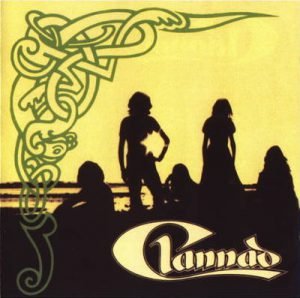 Back to 1973 and the debut album Clannad. There is so much to say about this debut. As with most young bands Clannad didn’t have a fully developed sound yet. Instead the album is filled with songs reflecting the influences and ideas, that would melt together into the band’s signature sound on their second album, Clannad 2. The first album is still a collection of styles, Irish folk, pop folk, a touch of medieval music, a sniff of the Beach Boys and even jazz folk! Jazz folk you say? Yep! It’s a new one for me too, but I really love it.
The opening track on Clannad, Níl Sé Ina Lá, is such a jazz folk song, and straight away my absolute favourite. The very first thing you will notice are the vocals. Máire has a warm, crystal clear voice that immediately stands out. You can clearly hear the years of classical training (Máire was destined to be a musical teacher, just as her mom). But she is not the only gifted singer in this band. The whole family is, so after Máire’s first opening lines, the whole band joins in for a short a cappella intro before the percussion picks up the rhythm and we are drawn into a lovely Joan-Baez-meets-Irish-folk-type of mid tempo song. Or so you think. As I’ve written earlier, Clannad does Irish folk their own way. To be honest, Níl Se Ina Lá is not a folk song at all. It’s a jazzy late 60’s pop song with an Irish folk feel to it. First there is the choir in the chorus that reminds me of the Belgian band
the Wallace Collection
and their big hit: Daydream. Then there are the solos, those are also not the typical cheerful folk melody lines running up and down the musical ladder. No, they are laid back, almost improvised jazz solos of flute, guitar and even double bass. The moment the band drops down to only a double bass and percussion is pure jazz. The whole song can be described as, ahm, lets say
Sweet Smoke
(a late 60/early seventies psychedelic jazz rock band.) meets Joan Baez meets the Wallace Collection to do some groovy folk tunes.
Luckily there are more of these jazz folk songs on this album, cause I really like them. Siúbhán Ní Dhuibhir. is one. A jazzy melody line played by Máire on harp. Again we hear a lovely laid back flute solo, in this case reminding me of
the Moody Blues.
The jazzy harp sound returns on An tOileán Úr. This song really takes me to that late 60’s psychedelic jazz sound, especially with that Wallace Collection type choir running all along the song.
Besides these jazzy psychedelics there are many more surprises on Clannad. There is Brian Boru’s March for instance. Brian Boru was a High King of Ireland, who on the 23th of april 1014 defeated the Viking king Sigtrygg, who ruled over Dublin at the time. Brian won the battle, although he himself got killed. The battle made the Vikings relinquish their claims on Ireland, and had turn their focus more on Scotland and England. Legend has it that this tune was first played as Brian’s men carried his body to its final resting place.
The song starts with some rather dark percussion and double bass sounds. A sound similar to Hinter Der Brombeerhecke from
Waldkauz.
Even after the intro this dark slightly jazzy traditional keeps showing similarities with Waldkauz. Come to think of it, this song would nowadays surely be called instrumental pagan folk. A tantalising mix between (psychedelic) jazz folk, a waltz, medieval influences and, because of the way the mandolin is played, Greek folk music.
There is one more song on Clannad with this medieval/baroque chamber music feel to it, the instrumental Mrs. McDermott, people who like
Imbue’s
music might want to check this song out.
Back to 1973 and the debut album Clannad. There is so much to say about this debut. As with most young bands Clannad didn’t have a fully developed sound yet. Instead the album is filled with songs reflecting the influences and ideas, that would melt together into the band’s signature sound on their second album, Clannad 2. The first album is still a collection of styles, Irish folk, pop folk, a touch of medieval music, a sniff of the Beach Boys and even jazz folk! Jazz folk you say? Yep! It’s a new one for me too, but I really love it.
The opening track on Clannad, Níl Sé Ina Lá, is such a jazz folk song, and straight away my absolute favourite. The very first thing you will notice are the vocals. Máire has a warm, crystal clear voice that immediately stands out. You can clearly hear the years of classical training (Máire was destined to be a musical teacher, just as her mom). But she is not the only gifted singer in this band. The whole family is, so after Máire’s first opening lines, the whole band joins in for a short a cappella intro before the percussion picks up the rhythm and we are drawn into a lovely Joan-Baez-meets-Irish-folk-type of mid tempo song. Or so you think. As I’ve written earlier, Clannad does Irish folk their own way. To be honest, Níl Se Ina Lá is not a folk song at all. It’s a jazzy late 60’s pop song with an Irish folk feel to it. First there is the choir in the chorus that reminds me of the Belgian band
the Wallace Collection
and their big hit: Daydream. Then there are the solos, those are also not the typical cheerful folk melody lines running up and down the musical ladder. No, they are laid back, almost improvised jazz solos of flute, guitar and even double bass. The moment the band drops down to only a double bass and percussion is pure jazz. The whole song can be described as, ahm, lets say
Sweet Smoke
(a late 60/early seventies psychedelic jazz rock band.) meets Joan Baez meets the Wallace Collection to do some groovy folk tunes.
Luckily there are more of these jazz folk songs on this album, cause I really like them. Siúbhán Ní Dhuibhir. is one. A jazzy melody line played by Máire on harp. Again we hear a lovely laid back flute solo, in this case reminding me of
the Moody Blues.
The jazzy harp sound returns on An tOileán Úr. This song really takes me to that late 60’s psychedelic jazz sound, especially with that Wallace Collection type choir running all along the song.
Besides these jazzy psychedelics there are many more surprises on Clannad. There is Brian Boru’s March for instance. Brian Boru was a High King of Ireland, who on the 23th of april 1014 defeated the Viking king Sigtrygg, who ruled over Dublin at the time. Brian won the battle, although he himself got killed. The battle made the Vikings relinquish their claims on Ireland, and had turn their focus more on Scotland and England. Legend has it that this tune was first played as Brian’s men carried his body to its final resting place.
The song starts with some rather dark percussion and double bass sounds. A sound similar to Hinter Der Brombeerhecke from
Waldkauz.
Even after the intro this dark slightly jazzy traditional keeps showing similarities with Waldkauz. Come to think of it, this song would nowadays surely be called instrumental pagan folk. A tantalising mix between (psychedelic) jazz folk, a waltz, medieval influences and, because of the way the mandolin is played, Greek folk music.
There is one more song on Clannad with this medieval/baroque chamber music feel to it, the instrumental Mrs. McDermott, people who like
Imbue’s
music might want to check this song out.
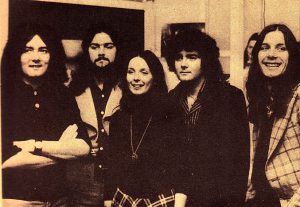 Clannad-the album- is not only filled with late 60’s folk crossover experiments, it also contains some beautiful contemporary ballads, honouring the bands Irish roots, and featuring the beautiful voice of Máire. An Mhaighdean Mhara for example is a lovely ballad sung by Máire, only accompanied by acoustic guitar.
The Pretty Maid is the first English spoken song on Clannad, and is a duet between Máire and one of the lads with some gentle guitars as accompaniment. A lovely song. Actually all the ballads are tastefully done. Máire has, as I said, this beautifully trained, crystal clear voice. She constantly reminds me of the equally brilliant Joan Baez. Fun fact, just as with an old 60’s album I have of Joan Baez, you can hear that the microphones at the time were not capable of handling those powerful high notes that both of them could sing, making them sound even stronger.
My favourite ballad comes at the end of the LP and is called Morning Dew. It’s a lovely pop folk ballad, originally written by
Bonnie Dobson.
But the Clannad version is equally beautiful. Early Clannad at their best.
Clannad-the album- is not only filled with late 60’s folk crossover experiments, it also contains some beautiful contemporary ballads, honouring the bands Irish roots, and featuring the beautiful voice of Máire. An Mhaighdean Mhara for example is a lovely ballad sung by Máire, only accompanied by acoustic guitar.
The Pretty Maid is the first English spoken song on Clannad, and is a duet between Máire and one of the lads with some gentle guitars as accompaniment. A lovely song. Actually all the ballads are tastefully done. Máire has, as I said, this beautifully trained, crystal clear voice. She constantly reminds me of the equally brilliant Joan Baez. Fun fact, just as with an old 60’s album I have of Joan Baez, you can hear that the microphones at the time were not capable of handling those powerful high notes that both of them could sing, making them sound even stronger.
My favourite ballad comes at the end of the LP and is called Morning Dew. It’s a lovely pop folk ballad, originally written by
Bonnie Dobson.
But the Clannad version is equally beautiful. Early Clannad at their best.
Clannad performing An tOileán Úr, at the Embankment Tallaght, Dublin in 1978 GENTLE POP FOLK BEAUTY: CLANNAD 2 (1974) So,the initial idea was to make Clannad -the album- our first CeltCast Classic. But after listening to it a few times I just knew there was way more to come. Don’t get me wrong, Clannad is a charming album with some brilliant moments on it. But it is also clearly the album of a young band. In the end I just had to discover how this went on, so within a week I had bought Clannad 2 and Dúlamán, the third album Clannad brought out, both by Gael Linn records. Conveniently Gael Linn re-released both albums as a double pack CD in 2010 and this is what I chose as our first CeltCast Classic. Both recordings are must have albums if you like 70’s Irish folk music. Both albums I would describe as pop folk. The songs follow the normal ‘rules’ of pop music arrangements, guitar, bass, drums, vocals (most of the times) and a nice solo at two third of the song. The folk part is in the instruments they play. Bodhrán instead of drums, flute solos instead of electric guitar and double bass instead of electric bass. It’s also in the song choice, many Irish traditionals and of course in the Gaelic language that is used. Clannad 2 has more ballads on it and therefore has a more relaxed, evening feel. Dúlamán is in general a bit more up tempo. But let’s dive into them in more detail, starting with Clannad 2.
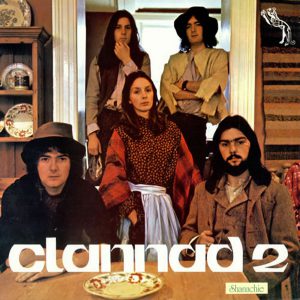 The opening song on Clannad 2, An Gabhar Bán is a feet stomping, hand clapping sing-along kind of balfolk favourite that will get you going every time you hear it. Especially Pól Ó Braonián’s flute melodies and solos will put an instant smile on your face. There is nothing like an Irish flute player to make you happy. It will work nowadays just as much as it did back in the day. It is instantly clear that this sound is much closer to traditional folk than the jazz folk that opened the first record. Not that it matters, An Gabhar Bán is just as strong an opener as Níl Se Ina Lá was on the first record! I have to say, Clannad are good at that, picking the right song to start with.
With second and third songs Eleanor Plunkett and Coinleach Ghlas An Fhómhair we get into the ballad part of this CD. Especially Coinleach Ghlass An Fhómhair is a lovely, lovely song. Folk pop at his best. (So good Clannad decided to record it one more time on their breakthrough album Magical Ring) Máire excels in this wonderful love ballad, but I also love the arrangements, the subtle guitars, giving this ballad a singer-songwriter quality. And then there is that wonderful 70’s stereo effect, the guitars come at you from both the left and the right, really drawing you into the song. I just love that old stereo sound, makes me wonder why it nowadays it is done so rarely. Such a shame. But I digress. I was sifting through my favourite songs on this CD and this is clearly one of them.
My next favourite is another ballad called, By Chance It Was. Everything I said about Coinleach Ghlass An Fhómhair is true of this song too. Máire is a pleasure to listen to, the flute solo is lovely and delicate. Fans of
Imbue’s
flute player Remy Schreuder, or of
SeeD’s
Koen van Egmond or, of course, the vocals of
Joan Baez
need to listen to this song, you won’t regret it.
The sixth track, Rince Briotánach starts with a gentle slow guitar riff so I settle in for another lovely ballad. Not so! Just as I concluded for myself that Clannad chose to discard the jazz influences that were so predominant on the first album, the guitar picks up speed fast and the song turns into a cool, full speed, instrumental, jazz folk gavotte. Clannad learned this song from the Breton group
Triskell,
who most likely played it a lot more traditional. But this version is fine by me, I just love this unique jazz folk sound, for me personally the highlight of Clannad 2. Period!
Or is it ? Dhéanainn Súgradh makes me doubt that statement straight away. I actually can’t decide. Originally Dhéanainn Súgradh was a choral work song from Scotland sung by women when refining coarse cloth. Ironically the lead vocals of Clannads jazz folk version of this traditional are sung by a man! The harp intro is lovely, the chorus a definite earworm, but what makes the song for me is the last part. A sophisticated slightly distorted electric guitar crawls in followed by Pól on flute. Together they go into a cool, jazzy, late 60’s improvised solo, mixing the best of Jethro Tull and the Moody Blues in their own sound. Cool, just cool.
And these highlights just keep coming. If Dhéanainn Súgrad is an instant earworm, then Teidhir Abhaile Riú is even worse, this must have been a crowd favourite during concerts in those days. It makes me wish I could speak Gaelic, so I could truly sing along, not mumble half-heartedly as I do now because I know I will sound silly. Not only that, I would love to really understand the lyrics because it is a song where the parents of a young girl are pleading with her to come home again and marry an eligible piper. Now that is a conversation I’d like to hear.
A last ballad, Chuaigh Mé ‘Na Rosann closes this album in style. As I said, overall Clannad 2 is a relaxed CD full of wonderful ballads, with some nice uptempo moments in between from a band that luckily hadn’t compromised their musical ideas for quick succes. An album that will appeal both to fans of Irish folk and, at times, to those that like melodious pagan folk, played by bands like
Emian
or
Waldkauz.
THE SIGNATURE SOUND IS FORMING: DÚLAMÁN (1976)
The opening song on Clannad 2, An Gabhar Bán is a feet stomping, hand clapping sing-along kind of balfolk favourite that will get you going every time you hear it. Especially Pól Ó Braonián’s flute melodies and solos will put an instant smile on your face. There is nothing like an Irish flute player to make you happy. It will work nowadays just as much as it did back in the day. It is instantly clear that this sound is much closer to traditional folk than the jazz folk that opened the first record. Not that it matters, An Gabhar Bán is just as strong an opener as Níl Se Ina Lá was on the first record! I have to say, Clannad are good at that, picking the right song to start with.
With second and third songs Eleanor Plunkett and Coinleach Ghlas An Fhómhair we get into the ballad part of this CD. Especially Coinleach Ghlass An Fhómhair is a lovely, lovely song. Folk pop at his best. (So good Clannad decided to record it one more time on their breakthrough album Magical Ring) Máire excels in this wonderful love ballad, but I also love the arrangements, the subtle guitars, giving this ballad a singer-songwriter quality. And then there is that wonderful 70’s stereo effect, the guitars come at you from both the left and the right, really drawing you into the song. I just love that old stereo sound, makes me wonder why it nowadays it is done so rarely. Such a shame. But I digress. I was sifting through my favourite songs on this CD and this is clearly one of them.
My next favourite is another ballad called, By Chance It Was. Everything I said about Coinleach Ghlass An Fhómhair is true of this song too. Máire is a pleasure to listen to, the flute solo is lovely and delicate. Fans of
Imbue’s
flute player Remy Schreuder, or of
SeeD’s
Koen van Egmond or, of course, the vocals of
Joan Baez
need to listen to this song, you won’t regret it.
The sixth track, Rince Briotánach starts with a gentle slow guitar riff so I settle in for another lovely ballad. Not so! Just as I concluded for myself that Clannad chose to discard the jazz influences that were so predominant on the first album, the guitar picks up speed fast and the song turns into a cool, full speed, instrumental, jazz folk gavotte. Clannad learned this song from the Breton group
Triskell,
who most likely played it a lot more traditional. But this version is fine by me, I just love this unique jazz folk sound, for me personally the highlight of Clannad 2. Period!
Or is it ? Dhéanainn Súgradh makes me doubt that statement straight away. I actually can’t decide. Originally Dhéanainn Súgradh was a choral work song from Scotland sung by women when refining coarse cloth. Ironically the lead vocals of Clannads jazz folk version of this traditional are sung by a man! The harp intro is lovely, the chorus a definite earworm, but what makes the song for me is the last part. A sophisticated slightly distorted electric guitar crawls in followed by Pól on flute. Together they go into a cool, jazzy, late 60’s improvised solo, mixing the best of Jethro Tull and the Moody Blues in their own sound. Cool, just cool.
And these highlights just keep coming. If Dhéanainn Súgrad is an instant earworm, then Teidhir Abhaile Riú is even worse, this must have been a crowd favourite during concerts in those days. It makes me wish I could speak Gaelic, so I could truly sing along, not mumble half-heartedly as I do now because I know I will sound silly. Not only that, I would love to really understand the lyrics because it is a song where the parents of a young girl are pleading with her to come home again and marry an eligible piper. Now that is a conversation I’d like to hear.
A last ballad, Chuaigh Mé ‘Na Rosann closes this album in style. As I said, overall Clannad 2 is a relaxed CD full of wonderful ballads, with some nice uptempo moments in between from a band that luckily hadn’t compromised their musical ideas for quick succes. An album that will appeal both to fans of Irish folk and, at times, to those that like melodious pagan folk, played by bands like
Emian
or
Waldkauz.
THE SIGNATURE SOUND IS FORMING: DÚLAMÁN (1976)
 Speaking of pagan folk, the title song of the third Clannad album Dúlamán was of course made famous in the pagan folk scene by
Omnia
on their Live Religion EP.
Clannad’s version, the first track of their third album, features the band’s strong points right away, the ones I already mentioned several times before: the strong classically trained vocals, the lovely harmonies, the tender guitar chords and the mysterious flute solos. Add that up and you get a really lovely rendition of this classic Gaelic song. The a cappella start is particularly impressive. Where I can normally compliment Máire on her vocals, it’s this time a male voice that shines. All in all a lovely strong traditional start to this third LP.
Where Clannad’s second album is more ballad orientated, on this third album they pick up the pace much more. Sometimes unexpectedly even, with Two Sisters for instance. It’s a song I know well from Emian’s Le Due Sorelle. So when I saw the lyrics I was automatically expecting a ballad, just like Emian did on Khymeia. But no. Clannad wrap this song of greed and jealousy in the most cheerful, upbeat of folk tunes, in the way only the Irish can.
And then there it is! Finally! On track 4 of their 3rd abum, Éirigh Suas a stóirin. What you ask? The famous Clannad choir of course! I was waiting for it. For me as a music enthusiast and reviewer it’s really interesting to hear how a band grows and evolves. How a typical sound is developed by a band and how it fits in with the scene they are in. Well the big feature of Clannad’s big hits, Theme to Harry’s Game and Robin are the layered vocals with the big effects on them. Using the choir as a single instrument. It is so typical of the later Clannad sound that I was hoping to find traces of it in their earlier work. And there it is, in Éirgh Suas, A Stóirin, used as an intro into the song. A small hint of their future sound. My inner geek is satisfied!
Come to think of it, thát is the real power of Clannad’s music. Their ability to take the folk music they grew up with and add new elements to it, be it the psychedelic jazz sound of the 60”s, the harmonies as you hear them here, or the new keyboard and studio technology later on with their brakthrough albums Magical Ring or Legend. In that sense you could call Clannad a progressive folk band.
The song itself is a lovely pop folk ballad. Máires lovely voice, the gentle guitars, that mesmerising Clannad choir starting and ending it, what is there not to love about this song.
As I feel I’m starting to repeat myself, I’ll just pick up a few more highlights. The Galtee Hunt is a nice little balfolk tune featuring Pól Ó Braonáin on flute. He continues with another lovely flute melody in Éirigh Is Cuir Ort Do Chuid Éadaigh. In this song Clannad combine the old and the new. A lovely jazzy double bass solo we’ve come to know now, that famous layered Clannad new age choir that is new to their sound and Máire’s harp hopping cheerfully through it all.
Next up is my favourite Clannad song of all. Siúil A Rúin. A wonderful ballad that brings everything I have come to love about Clannad to the table. Máire’s beautiful voice, the gentle guitar notes of the lads, uptempo bits, the lovely tender breakdown to the chorus. This is pure folk heaven! So beautiful.
And then we get a lovely ‘Castlefest’ folk treat. Mo Mháire. It starts with Ciarán playing a cheerful little riff on his double bass, then Pól joins in with a slightly quirky but oh-so cheerful flute tune that I know so well from SeeD. You just have to smile when you hear it. And the happy jazzy groove just makes it even better. The a capella dTigeas A Damhsa and the cheerful Irish jig Cucanandy/The Jug Of Brown Ale end the original recording of Dúlamán.
On this re-release Gael linn have added a bonus track that comes from a split single the label released in 1975 in conjunction with the 1975 pan Celtic contest in Killarney. The B-side features the song
Faoileán
by the influential Irish folk singer
Tríona
as an early warning on environmental issues, while the A-side features the winning entry by Clannad, An Bealach Seo ‘Ta Romham. It’s a nice uptempo song with that ever so slight medieval feel due to the mandolin in it. This bonus track not only finishes this lovely CD, it also finishes this introduction.
https://www.youtube.com/watch?v=RPW7X2xUh6k
FAMOUS LAST WORDS BY JOE HENNON
After the release of Dúlamán in 1976 Clannad went on tour over Europe, part of which found their way on the 1979 album In Concert. In 1980 another family member, Eithne Pádraigin Ni Bhraonáin joined Clannad for a brief time, a family member we now know as
Enya,
who left the band again just before they recorded their break-through album Magical Ring. But that is a story for another time.
Now for those famous last words that conclude any review or introduction. In this case they are not by me, but by a famous guest from the (pagan) folk scene. He is an acoustic guitar player that played with
Shantalla,
Omnia and lately SeeD. He is, of course, Joe Hennon. Being Irish himself. I asked Joe if he was willing to write a few words on the influence Clannads early albums had on him and the folkscene in those days. Joe was quite willing to respond:
Speaking of pagan folk, the title song of the third Clannad album Dúlamán was of course made famous in the pagan folk scene by
Omnia
on their Live Religion EP.
Clannad’s version, the first track of their third album, features the band’s strong points right away, the ones I already mentioned several times before: the strong classically trained vocals, the lovely harmonies, the tender guitar chords and the mysterious flute solos. Add that up and you get a really lovely rendition of this classic Gaelic song. The a cappella start is particularly impressive. Where I can normally compliment Máire on her vocals, it’s this time a male voice that shines. All in all a lovely strong traditional start to this third LP.
Where Clannad’s second album is more ballad orientated, on this third album they pick up the pace much more. Sometimes unexpectedly even, with Two Sisters for instance. It’s a song I know well from Emian’s Le Due Sorelle. So when I saw the lyrics I was automatically expecting a ballad, just like Emian did on Khymeia. But no. Clannad wrap this song of greed and jealousy in the most cheerful, upbeat of folk tunes, in the way only the Irish can.
And then there it is! Finally! On track 4 of their 3rd abum, Éirigh Suas a stóirin. What you ask? The famous Clannad choir of course! I was waiting for it. For me as a music enthusiast and reviewer it’s really interesting to hear how a band grows and evolves. How a typical sound is developed by a band and how it fits in with the scene they are in. Well the big feature of Clannad’s big hits, Theme to Harry’s Game and Robin are the layered vocals with the big effects on them. Using the choir as a single instrument. It is so typical of the later Clannad sound that I was hoping to find traces of it in their earlier work. And there it is, in Éirgh Suas, A Stóirin, used as an intro into the song. A small hint of their future sound. My inner geek is satisfied!
Come to think of it, thát is the real power of Clannad’s music. Their ability to take the folk music they grew up with and add new elements to it, be it the psychedelic jazz sound of the 60”s, the harmonies as you hear them here, or the new keyboard and studio technology later on with their brakthrough albums Magical Ring or Legend. In that sense you could call Clannad a progressive folk band.
The song itself is a lovely pop folk ballad. Máires lovely voice, the gentle guitars, that mesmerising Clannad choir starting and ending it, what is there not to love about this song.
As I feel I’m starting to repeat myself, I’ll just pick up a few more highlights. The Galtee Hunt is a nice little balfolk tune featuring Pól Ó Braonáin on flute. He continues with another lovely flute melody in Éirigh Is Cuir Ort Do Chuid Éadaigh. In this song Clannad combine the old and the new. A lovely jazzy double bass solo we’ve come to know now, that famous layered Clannad new age choir that is new to their sound and Máire’s harp hopping cheerfully through it all.
Next up is my favourite Clannad song of all. Siúil A Rúin. A wonderful ballad that brings everything I have come to love about Clannad to the table. Máire’s beautiful voice, the gentle guitar notes of the lads, uptempo bits, the lovely tender breakdown to the chorus. This is pure folk heaven! So beautiful.
And then we get a lovely ‘Castlefest’ folk treat. Mo Mháire. It starts with Ciarán playing a cheerful little riff on his double bass, then Pól joins in with a slightly quirky but oh-so cheerful flute tune that I know so well from SeeD. You just have to smile when you hear it. And the happy jazzy groove just makes it even better. The a capella dTigeas A Damhsa and the cheerful Irish jig Cucanandy/The Jug Of Brown Ale end the original recording of Dúlamán.
On this re-release Gael linn have added a bonus track that comes from a split single the label released in 1975 in conjunction with the 1975 pan Celtic contest in Killarney. The B-side features the song
Faoileán
by the influential Irish folk singer
Tríona
as an early warning on environmental issues, while the A-side features the winning entry by Clannad, An Bealach Seo ‘Ta Romham. It’s a nice uptempo song with that ever so slight medieval feel due to the mandolin in it. This bonus track not only finishes this lovely CD, it also finishes this introduction.
https://www.youtube.com/watch?v=RPW7X2xUh6k
FAMOUS LAST WORDS BY JOE HENNON
After the release of Dúlamán in 1976 Clannad went on tour over Europe, part of which found their way on the 1979 album In Concert. In 1980 another family member, Eithne Pádraigin Ni Bhraonáin joined Clannad for a brief time, a family member we now know as
Enya,
who left the band again just before they recorded their break-through album Magical Ring. But that is a story for another time.
Now for those famous last words that conclude any review or introduction. In this case they are not by me, but by a famous guest from the (pagan) folk scene. He is an acoustic guitar player that played with
Shantalla,
Omnia and lately SeeD. He is, of course, Joe Hennon. Being Irish himself. I asked Joe if he was willing to write a few words on the influence Clannads early albums had on him and the folkscene in those days. Joe was quite willing to respond:
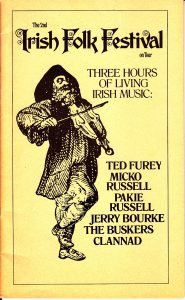 -‘When I was getting into music in the 1970s I was mostly listening to rock and metal, but then three Irish folk bands appeared which just blew me away and got me into folk music for the rest of my life. They were
The Bothy Band,
Planxty
and Clannad. I loved the sense of history and heritage in their songs and their music was of a standard that was something completely new.
While Planxty and The Bothy Band mostly played songs in English as well as powerful instrumental sets, Clannad were different. Hearing songs in Irish (Gaelic) sung by native speakers was a revelation and so was their music. Clannad incorporated elements of jazz and progressive rock into traditional songs and their first two albums – I would say especially Clannad 2 which is regarded as their classic- made a huge impact on me and the folk scene in general. Their use of harp, flute, bass and harmony singing set them on the path to fame and inspired a whole new generation of Irish musicians, me included.
And Clannad’s legacy lives on. Joe Hennon took the inspiration he found in Clannad’s music with him into the music of Omnia, a band that in its turn inspired a new generation of pagan folk bands like Waldkauz, SeeD and Emian. And so the early music of that young Irish band, going against the stream, still rings on in the music we all love so much, making Clannad 2 and Dúlamán just as relevant now as they were when they were first released 45 years ago.
– Cliff
Editor: Diane Deroubaix
-‘When I was getting into music in the 1970s I was mostly listening to rock and metal, but then three Irish folk bands appeared which just blew me away and got me into folk music for the rest of my life. They were
The Bothy Band,
Planxty
and Clannad. I loved the sense of history and heritage in their songs and their music was of a standard that was something completely new.
While Planxty and The Bothy Band mostly played songs in English as well as powerful instrumental sets, Clannad were different. Hearing songs in Irish (Gaelic) sung by native speakers was a revelation and so was their music. Clannad incorporated elements of jazz and progressive rock into traditional songs and their first two albums – I would say especially Clannad 2 which is regarded as their classic- made a huge impact on me and the folk scene in general. Their use of harp, flute, bass and harmony singing set them on the path to fame and inspired a whole new generation of Irish musicians, me included.
And Clannad’s legacy lives on. Joe Hennon took the inspiration he found in Clannad’s music with him into the music of Omnia, a band that in its turn inspired a new generation of pagan folk bands like Waldkauz, SeeD and Emian. And so the early music of that young Irish band, going against the stream, still rings on in the music we all love so much, making Clannad 2 and Dúlamán just as relevant now as they were when they were first released 45 years ago.
– Cliff
Editor: Diane Deroubaix
